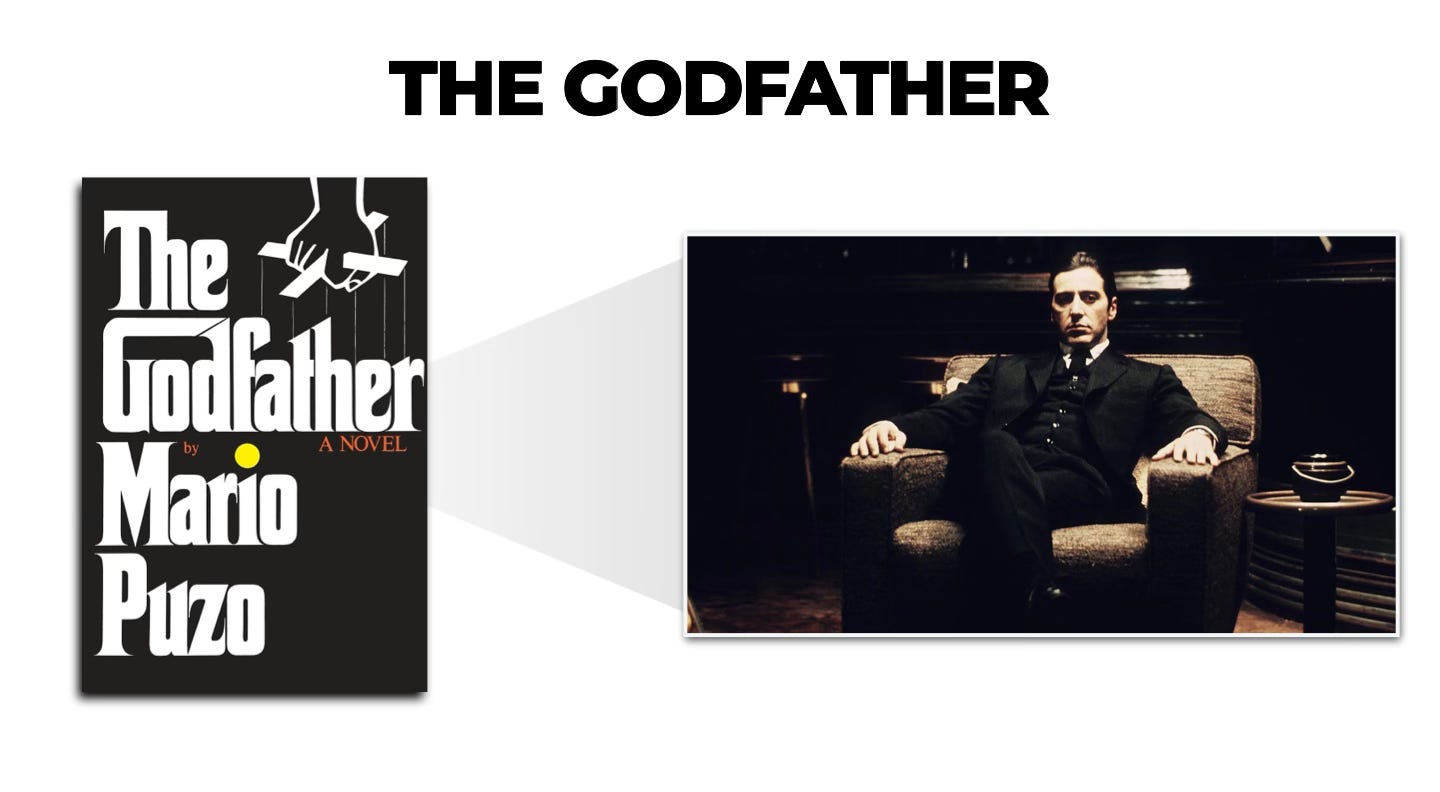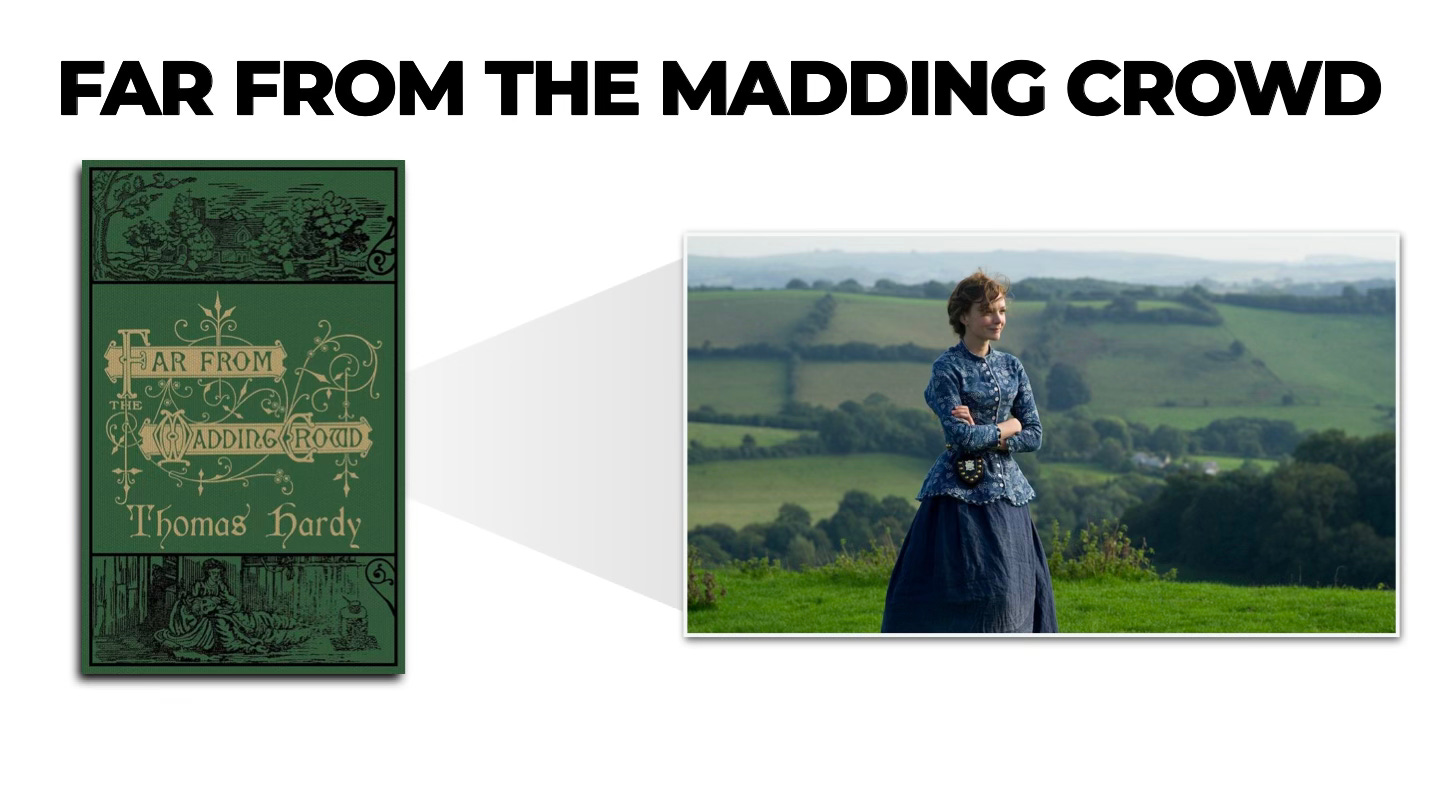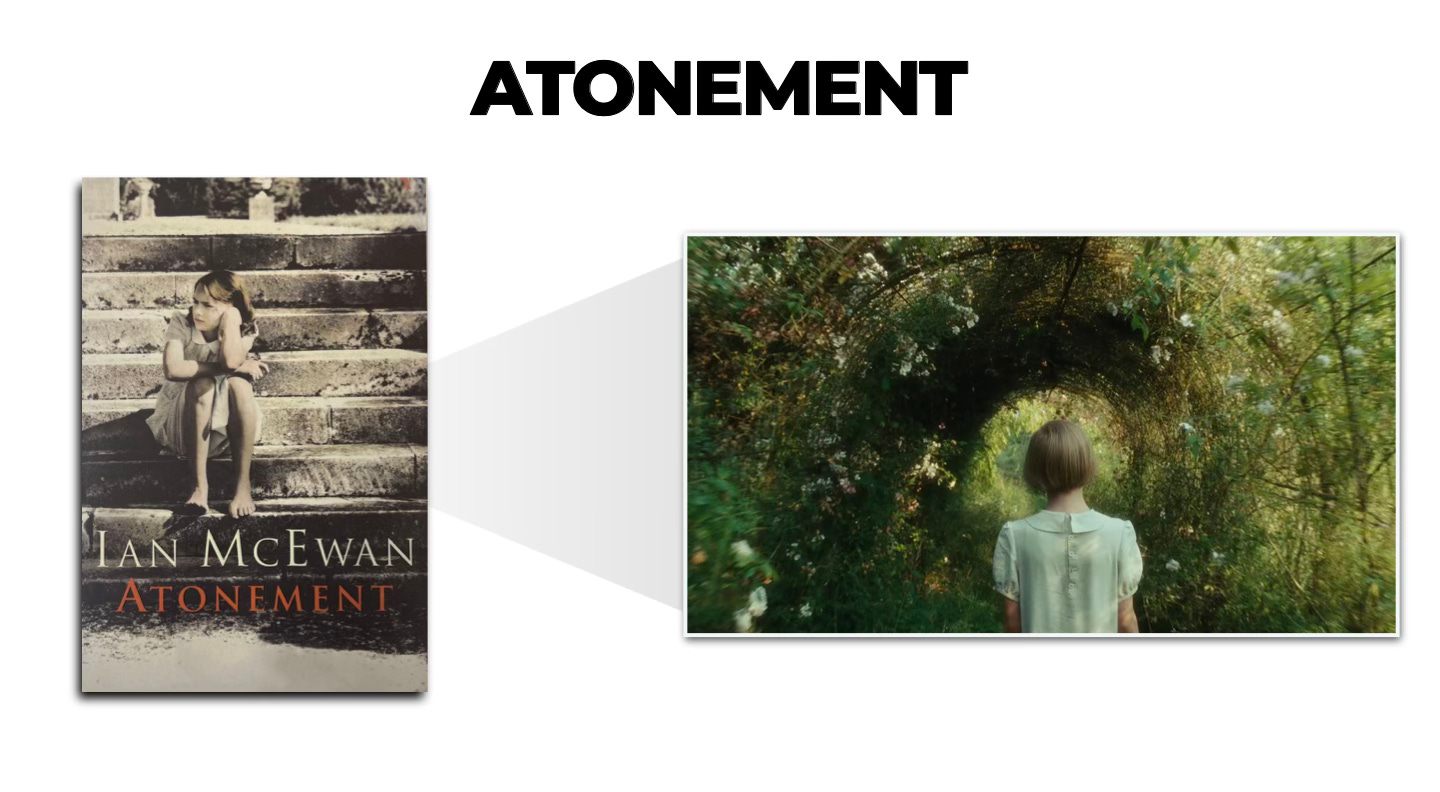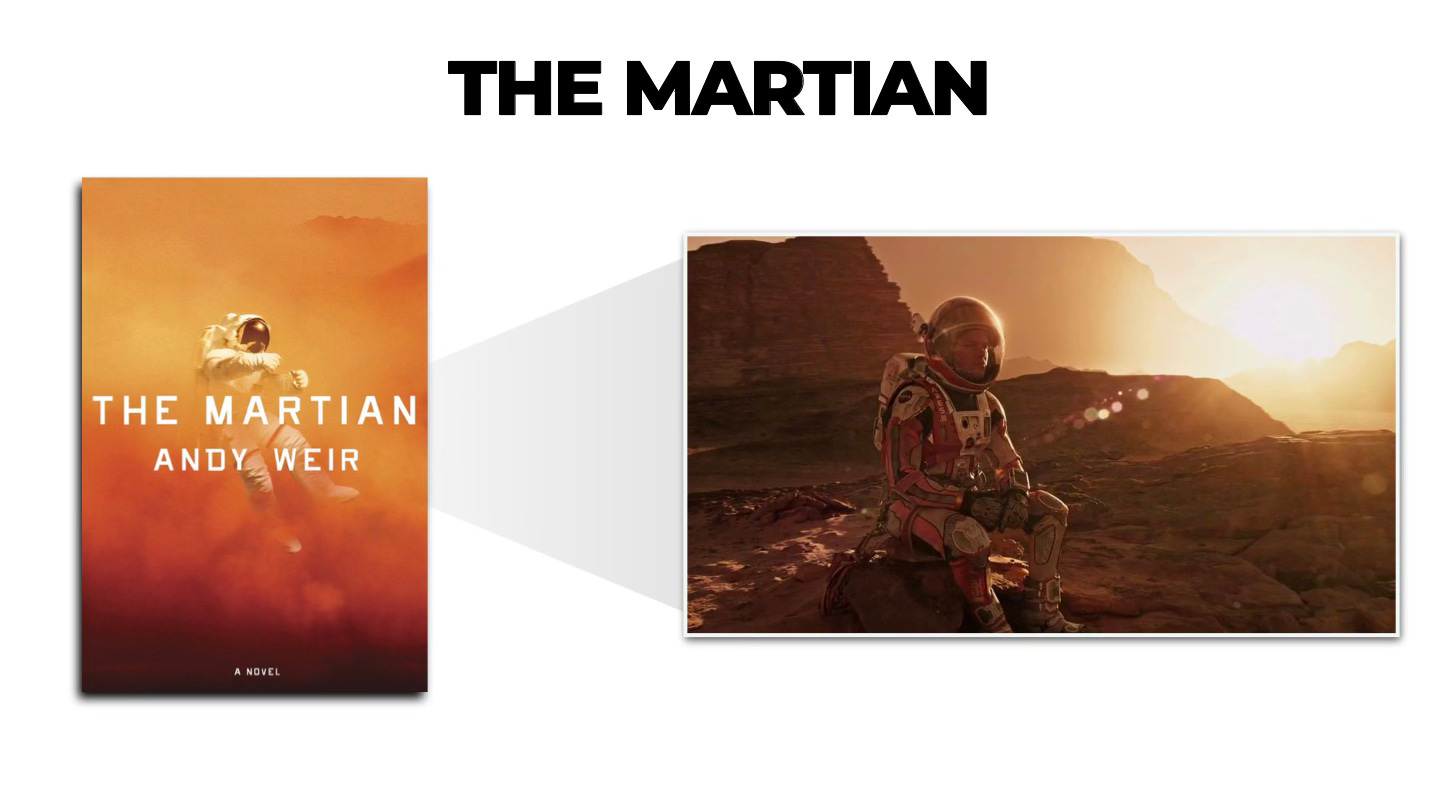From the Book to the Screen | 5 of My Faves
Some of the best adaptations out there...for books I've read and loved.
» “Did somebody get paid for writing that dialog?” —Audience Member, Singin’ in the Rain (1952)
Depending on how well you know me (or not), you may or may not know that I love a good reinterpretation, adaptation, or reimagining. I love movies, music, or books to be given new life by either changing mediums or by adding some particular spin on it that shifts the angle, giving me a chance to view its core from a different perspective. I adore a good cover song, a photographic reimagining of a famous painting, or moving a classic novel or a Shakespearean play to the high school arena because that’s where it’s easiest to see the drama in real life.
It’s easy, for a variety of reasons, for screen adaptations of books to get held up to the light to meet almost impossible standards from those who loved the book.
(Interestingly, everyone somehow agrees that (right or wrong) screen-to-book adaptations are a little less … inspired? Or are invalid because of canonical reasons. I remember having a novelization of 1985’s Back to the Future and thought it was a less-than product.)
Despite the fact that so much goes into translating a book to a screenplay and then that goes off to become an incredibly large team effort, it’s hard not to say I love adaptations, “…when they’re done well.” But I try to be mindful that any changes made have been done with intention. Whether it’s a feature film adaptation or a small screen adaptation, the role of the book as the source material is not to stay 100% the same…it’s like any translation and tweaks and changes must happen to go from one language to another.
So, while I struggle with a solid and set list of a numbered top ten, I can safely say these 5 movies are among my absolute favorite adaptations. The order they come in is not important; I’m just happy to have had the privilege of seeing them and knowing them well.
FROM BOOKS I LOVE
All of these are books I have or would reread and movies I have or would rewatch — countless times.
The Godfather by Mario Puzo was published in 1969, and I read this novel (best guess) in my sophomore year of high school…so 1994 – 1995. And, this was one of those cases where I’d seen the movie first. Actually, I’d already seen both The Godfather (1972) and The Godfather Part II (1974) by that time. The most influential mafia story is so much more than just that, as it follows a complex character’s rise from reluctance to ultimate power.
The hard work by the author and the director, Francis Ford Coppola, at puzzling together the book’s core is slightly notorious for fans of the movie and book. Nehemiah, from the YouTube Channel Behind the Curtain, breaks down the entire idea behind Coppola’s prompt book that he used to better craft his movie in his video dedicated to this, How a Director’s Bible Saved His Movie From Disaster, and it’s a fascinating watch.
I don’t love the movie because of its overwhelming critical acclaim — though that’s there, marked as one of the greatest and most influential movies of all time. I don’t love it for the accolades — though it has that, too…<cough, cough> Best Picture, Best Actor for Brando (this was the infamous year he declined the award), and (drumroll) Best Adapted Screenplay.
I love this movie because it has everything going for it. Not only is the story excellent (book or film), but the film got all the big key elements exactly right. The cast is phenomenal, the music is unforgettable, the cinematography is gorgeous, the direction delivers beyond expectations, and the deliberate choices made in translating this book for the big screen were nothing but strokes of brilliance.
Far From the Madding Crowd by Thomas Hardy was published in 1874, and, like many novels of the day (and before), it began its life as a serial publication in a literary magazine. Though there had been several previous adaptations (ranging from a silent film, a stage play, a ballet, a full-length feature film in 1967, a made-for-tv series, and others), the 2015 film is a gorgeous piece of cinema, really holding onto the essence of a Thomas Hardy book: connection to nature, a pastoral setting, resistance to change, and the inevitability of change and progress to come.
I happened to have been reading this book, on my own accord, when the movie trailers started dropping — how fortuitous. One of my favorite YouTubers, Tristan and the Classics, dropped a book review (here) four years ago, and his video is so relatable and yet lightly analytical, I’d recommend it in a heartbeat.
The novel is one of those beauties I could reread on a regular basis. Hardy’s eye for setting and his episodic-style of fixing his stories makes for a brilliant translation to the screen — big or small. The 2015 film adaptation retains all this quiet hum of nature that is the underpinning for the book, and it has a brilliant cast and score to boot. Plus, the chemistry between the two leads, Carey Mulligan and Matthias Schoenaerts, is off the charts. But the cinematography I think shines brightest here. Leaning into natural lighting and expansive views, cinematographer Charlotte Bruus Christensen makes the journey feel like you’ve stepped into another world. The greens, blues, and reds are so vibrant and alive, they practically pulse on screen.
Oh my god, I love this story. Film or book, I don’t care. Some books are a quiet sort of genius and some books are endlessly discussable, and some rare birds, like Howards End, are both.
First published in 1910, Forster delves deeply into picking apart turn-of-the-century English society, its conventions, and its delineations separating the classes, told through the intertwining story of three families.
Released in 2017 in a four-episode format, this is such a rewatchable mini-series. I have lost count of the number of times I’ve rewatched this. Once again, all the main components are masterfully done: cast, score, cinematography, and direction…along with a fantastically adapted screenplay. The essence of Forster’s book is alive and well in this four-hour adaptation. Also, I have to mention the set and costume designs are perfectly done and absolutely mesmerizing.
This calm approach to a story that is teeming with drama and criticism beneath the surface is exactly the right method for being able to allow the simmering plot time to fully develop. If you’re interested, give a listen to Matthew Macfadyen talking with Gold Derby’s Tony Ruiz about the character of Henry Wilcox (here).
This story does so much that I find a new layer each time I revisit. And have so much to say about this screen version and the book itself that I’m kind of at a loss of what I should say that doesn’t run headfirst with a scalpel for a full plot dissection. I’ll leave it at a gentle command: go forth to read and watch.
Now, I will say, I do also love the 1992 film version, but I think the all-encompassing mini-series is better suited for giving all the necessary themes the proper amount of room to stretch and expand.
Atonement by Ian McEwan, published in 2001, takes a traditional three-act structure and flips it a little bit with the behavior and development of the main character, Briony Tallis. The 2007 adaptation is a fantastic example of delicate little trimmings and reshapings that happen when traversing storytelling mediums. What gets excised and retooled from the novel isn’t missed in the film. A nearly perfect translation to the screen, director Joe Wright (he of Pride & Prejudice (2005) fame) pushes forward the heartbeat of the story, which tightens and presses forward like the persistent ticking of a clock. The sound design, the score, and the dialogue are all deceptively razor sharp.
The absolute gem of this film is Saoirse Ronan — and what a pivotal part of this stunning cast. Ronan plays Briony at age 13 and is only there for Act I, where the role is taken over, first by Romola Garai and then by Vanessa Redgrave. Keira Knightly and James McAvoy are both brilliant and equally important to the film, but they appear more as a unit — as two parts of a whole, a balance of character development and drive. But it’s the weight of this film that rests on Ronan’s little shoulders, and it’s Ronan that you are still thinking of for the entirety of the film. She is Briony.
Just for kicks, here’s a fun clip of Knightley and McAvoy interviewing each other while promoting the film (here).
Last, but not least, The Martian by Andy Weir, self-published in 2011 — this one has the beginnings of even the older books on this list…as Weir first published what would become this well-known novel in a serialized format on his blog! Later, published by Crown in 2014 following the rights being optioned for film by 20th Century Fox in 2013. The Martian was released as a film in 2015.
A story of survival and some of the best earthbound teamwork this side of Apollo 13. What was essential when going from page to film for this novel is that the lead character, Mark Watney, never gets overwhelmed with sadness or depression, and he uses his humor as a tool as much as his scientific skills and mind, applying himself fully to surviving. Grabbing Matt Damon for this role was exactly the right move and a big deal, as Damon had expressed hesitation to director Ridley Scott because he’d just played an astronaut in Christopher Nolan’s hit Interstellar (2014), and he was concerned that audiences wouldn’t want to see him suit up again so soon. Damon has the presence to carry an entire film in the same way Tom Hanks did in Cast Away (2000). And honestly, there are some actors and actresses out there who just cannot play certain parts…but Damon I believe could be this Watney botanist person. Some I don’t believe. (Looking at Mark Wahlberg in The Happening (2008). Dude is NOT a high school science teacher.)
Bringing some of the technical aspects featured in the novel along for the ride, everything seems safe in Damon’s hands. Ridley Scott, whose films are honestly hit and miss for me, is back at his best here with The Martian. The cinematography is phenomenal, but one of the most impressive aspects of this film (especially these days) is the spare use of green screen, and the lean into using practical effects, filming at awesome locations, building practical sets, and then applying CGI to enhance what was filmed and replicate what couldn’t be done in front of the camera.
The expertise in making this film directly reflects the expertise that is going on in the story and the way those two sides complement each other makes this a wonderful adaptation. You can check out this video (here) from Wired on YouTube where NASA scientists fact check the film.
So, that’s 5 for now. And somehow I didn’t realize, when this was a germ of an idea, that this would make me want to reread and rewatch these soon. I should’ve known better. I know me.
—C.









I’m a SS Patron of SBL, have heard your name and role in the podcast. Listening to you and now reading your contributions here is a delight.
The Godfather and The Silence of the Lambs are the two that immediately come to my mind. There may be others but hands down in these cases the movies are perfection.